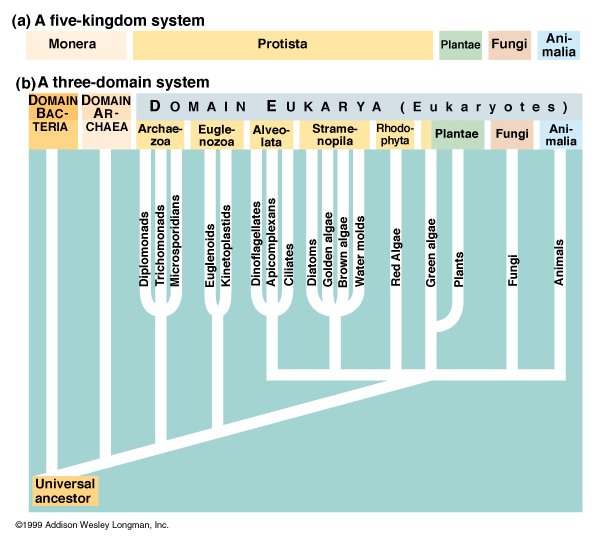
Alternative Classifications of Life
Five Kingdoms versus Three Domains

The Linnaean
system (1758) classified all macroscopic living organisms as
either Animals
or
Plants, based on whether they moved [anima, with a soul] or not.
Thus, Fungi
were included as plants. With the invention of the microscope
and the
discovery of microogranisms, bacteria, algae, and other
unicellular organisms
were
variously classified as one or the other, or sometimes placed in
a
separate
Kingdom.
The Five Kingdom system (first proposed in 1969 and now the most widely used) places all prokaryotes (organisms without nuclear membranes) in a single Kingdom Monera, and separates the three principal branches of multicellular eukaryotes as separate Kingdoms. In this sytem, Protista tends to remain as a catch-all taxon for eukaryotic groups, such as the highly diverse algae, that do not fit readily into the other Kingdoms.
The Three Domain system is based on modern molecular evidence, and uses the category Domain as a Superkingdom to emphasize the extremely ancient lineages that exist among prokaryotes and protista, and the relatively recent relationships of multicellular organisms. Considerable discussion continues as to the exact relationships among the major living lineages. Use of molecular evidence becomes complicated with the recognition of lateral transfer of DNA between lineages early in evolution.